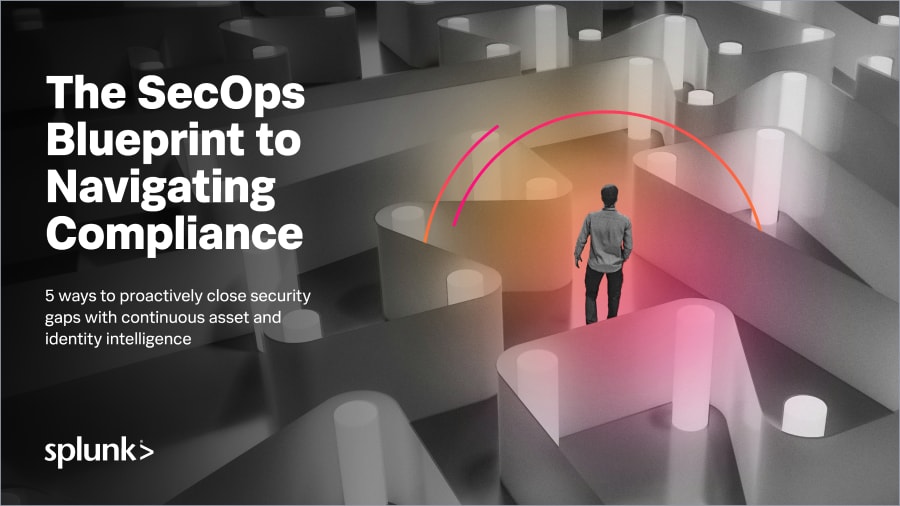SOC 2 Compliance Checklist: How to Pass the Audit (Checklist Inside)
Key takeaways
- SOC 2 compliance is essential for building trust and meeting the security expectations of modern clients, especially for SaaS and cloud-based service providers.
- A tailored SOC 2 checklist — covering everything from scoping and readiness assessments to documentation, security controls, and ongoing monitoring — streamlines audit preparation and supports continuous compliance.
- While automation tools and platforms can simplify evidence collection and control monitoring, achieving and maintaining SOC 2 compliance requires ongoing governance, regular updates, and a commitment to operational excellence.
Securing customer trust goes beyond promises — it requires proof that your organization can protect sensitive data at every turn. That’s where SOC 2 compliance comes in, serving as a benchmark for data security, privacy, and operational integrity. But what does it actually take to achieve SOC 2 compliance, and how can you be sure your company is ready for an audit?
In this article, we’ll cover all you need to know about SOC 2 compliance and provide a checklist you can refer to anytime to ensure your organization remains compliant.
What is SOC 2 compliance?
Short for System and Organization Controls 2, SOC 2 is a framework developed by the American Institute of Certified Public Accountants (AICPA) for assessing how organizations manage data to protect the privacy and interests of their clients.
SOC 2 sets the standard for managing customer data based on the five Trust Services Criteria (TSC), so it is something that many businesses and organization must comply with. These criteria are:
- Security.
- Availability.
- Confidentiality.
- Processing Integrity.
- Privacy.
Unlike certifications like ISO 27001, SOC 2 is not a one-size-fits-all checklist. Instead, it provides a flexible framework for organizations to implement and prove the effectiveness of security controls relevant to their business model.
SOC 2 compliance has become a minimum requirement for B2B SaaS and cloud-based service providers, particularly those that handle customer data. Achieving compliance demonstrates that your organization has strong data security, privacy, and operational processes. Additionally, SOC 2 compliance can help build trust with clients, streamline vendor assessments, and provide a competitive advantage in your industry.
(Read for an explainer on SOC 1, 2, 3 compliance.)
What is an SOC 2 checklist?
An SOC 2 checklist is a structured list of tasks, policies, controls, and documentation that organizations must implement to prepare for a SOC 2 audit. Because SOC 2 audits are customized based on your services, systems, and chosen TSC categories, your checklist should be tailored to your organization’s specific risk environment and business model.
A well-rounded SOC 2 checklist typically covers:
- Scoping and risk assessment.
- Security controls.
- Trust services criteria mapping.
- Documentation and policies.
- Evidence collection.
- Monitoring and alerting.
- Employee training and onboarding.
- Vendor due diligence.
- Audit readiness preparation.
It’s important to periodically review and update your checklist to reflect changes in your business operations or the regulatory landscape.
(Related reading: what is a SOC?)
SOC 2 Type I vs Type II: How SOC report types affect your checklist
There are two types of SOC 2 reports, and your checklist needs to reflect which one you're pursuing:
SOC 2 Type I
This is a point-in-time report. It evaluates whether your controls are designed correctly as of a specific date. It’s easier and faster to obtain, and ideal for startups or organizations seeking early-stage compliance. A Type I SOC 2 checklist focuses on establishing controls, creating policies, and gathering initial documentation.
SOC 2 Type II
This is a period-based report, typically covering a period of around 3 to 12 months. It assesses whether your controls are operating effectively over time and is more valuable to enterprise clients and security-conscious prospects.
Type II is usually required by larger customers or partners who want assurance that your controls work in practice, not just on paper.
SOC 2 compliance checklist for a successful audit
Preparing for a SOC audit, especially your first one, can feel overwhelming. Thankfully, with the right guidance, it’s easier. Whether you're pursuing a SOC 2 Type I or the more comprehensive Type II, being proactive and organized will save you time, money, and headaches.
Below are 10 tips to help you prepare for an SOC audit with confidence and effectiveness.
1. Understand the scope of your audit
Once you’re clear on the type of SOC report you need, you need to consider the TSC you’ll be evaluated against. Note that security is mandatory, while others are optional.
Next, decide whether you’re aiming for a Type I (design of controls) or Type II (design + effectiveness over time) SOC 2 audit. It’s best to conduct a formal scoping session with your auditor or a compliance consultant to avoid surprises later. This session will help define which systems, departments, and services fall within the audit’s boundaries.
2. Perform a readiness assessment
A readiness assessment is a practice run. It identifies gaps in your current processes, documentation, or technical controls before the actual audit.
This will help you map controls to TSC requirements and spot missing policies or inconsistent practices. It also ensures that remediation efforts are prioritized. Many companies use compliance automation platforms like Vanta, Drata, or Secureframe to expedite this process. Consider engaging an external consultant for the assessment if your team is new to compliance frameworks.
3. Develop and centralize documentation
SOC audits rely heavily on documented evidence. You’ll need to prepare the following:
- Policies: Access control, incident response, data classification, vendor management, etc.
- Procedures: Onboarding/offboarding, vulnerability patching, and code deployment.
- Logs and records: System activity, change logs, security alerts.
Create a shared, version-controlled repository (e.g., Notion, Confluence, Google Drive) to store everything auditors may request. Ensure these documents are kept up-to-date and easily accessible to all relevant stakeholders.
4. Implement and test key security controls
Your technical and administrative controls must be fully operational, especially if you’re pursuing a Type II report. Focus on:
- Access management: Role-based access control (RBAC), principle of least privilege, MFA.
- Data security: Encryption in transit and at rest.
- Change management: Review and document code, config, or infrastructure changes.
- Monitoring and alerting: Set up alerts for unauthorized access, suspicious activity, or policy violations.
Regularly test these controls to ensure they are functioning as intended, and promptly address any weaknesses found.
5. Train your team
Auditors may interview staff members or request training logs. Everyone involved should:
- Know how to respond to security incidents.
- Complete annual or biannual security awareness training.
- Understand your company’s key security and compliance policies.
6. Establish incident response and disaster recovery procedures
Have a well-documented, tested incident response plan and disaster recovery/business continuity plan (DR/BCP). These demonstrate your organization’s ability to handle crises effectively. Test your incident response and DR/BCP plans at least annually and after major changes to infrastructure or business processes.
7. Vet and document third-party vendors
Auditors will want to see that you manage third-party risk. Be sure to prepare a list of all vendors that access customer data or critical systems. Also have their SOC reports or compliance status ready, as well as contracts or SLAs with security clauses.
Review vendor risk on a regular basis and maintain a process for onboarding and offboarding vendors securely.
8. Choose the right auditor early
Look for a licensed CPA firm that specializes in SOC 2 audits and understands your tech stack (e.g., cloud-native, SaaS, DevOps). Also, choose one that provides support during the preparation phase. The sooner you align with your auditor, the smoother the process will be.
Ask potential auditors about their experience in your industry and their approach to remote or hybrid audits.
9. Use compliance automation tools
Platforms like Vanta, Drata, Tugboat Logic, and Strike Graph can automate many crucial processes. These include evidence collection, policy templates, control monitoring, and readiness assessments. They also reduce back-and-forth with auditors by keeping all data centralized and readily available for audits.
Automation tools can also provide dashboards for tracking progress and generating reports for internal stakeholders.
10. Think beyond the audit date
SOC compliance doesn’t end when you pass the audit. Especially for Type II, you also need to maintain ongoing controls, update documentation regularly, and monitor for drifts or breakdowns in policy enforcement.
Schedule regular internal reviews to ensure your controls and processes stay effective and compliant year-round.
How to choose the right SOC 2 compliance tools
SOC 2 compliance isn’t just about passing an audit — it’s about creating repeatable processes and evidence you can maintain year-round. The right tools can make this far easier, but the best fit depends on your organization’s size, tech stack, and long-term goals.
When evaluating compliance tools, consider:
- Company size and growth stage. Startups may need lightweight automation for fast audit readiness, while larger teams often require enterprise-grade platforms that can support multiple frameworks.
- Framework coverage. If you’ll need to comply with ISO 27001, HIPAA, GDPR, or PCI DSS in the future, choose a tool that supports multiple standards from the start.
- Integration with your environment. Look for native integrations with your cloud provider, code repositories, identity provider (e.g., Okta, Azure AD), ticketing system, and HR platform. The more integrations, the less manual work during audits.
- Level of support. Some platforms are designed for self-service, while others provide hands-on guidance and policy templates. The right balance depends on your in-house experience.
- Evidence collection and monitoring. Ensure the tool helps centralize logs, track control effectiveness, and produce audit-ready reports.
No matter which tool you choose, remember that SOC 2 compliance cannot be fully automated or achieved with software alone. Tools accelerate the process, but you still need governance, documented policies, and control monitoring to satisfy auditors.

The Unified Security and Observability Platform
No turnkey solution — but Splunk can help
It’s important to remember that there is no true “SOC 2 in a box” solution. Because every organization has unique systems, risks, and controls, SOC 2 compliance cannot be achieved simply by purchasing software. Instead, it requires an ongoing program of governance, evidence collection, and control monitoring. That said, technology platforms can play a critical role in helping you get there.
Splunk, for example, helps centralize logging, monitoring, and alerting across your environment — making it easier to demonstrate that your controls are operating effectively. By using Splunk for evidence collection, continuous monitoring, and incident response documentation, you can streamline your SOC 2 audit preparation and maintain compliance over time.
Final thoughts on navigating SOC 2 compliance
Achieving SOC 2 compliance is more than just checking a box. It’s really about building a trustworthy, secure, and resilient foundation for your business. Since data privacy and operational integrity are non-negotiable, your ability to demonstrate sound security practices can be the difference between securing a major client and losing one.
Whether you're preparing for a Type I or Type II audit, having the right checklist, a proactive mindset, and support from modern compliance tools empowers you to navigate it with clarity and confidence, helping you stand out in a crowded B2B market.
Remember that SOC 2 compliance is not a one-and-done endeavor. It is an ongoing exercise and a commitment to protecting your customers and operating with integrity.
Frequently asked questions (FAQs) about SOC 2 compliance
A SOC 2 report is typically valid for 12 months from its issue date. Organizations must undergo a new audit each year to demonstrate ongoing compliance and control effectiveness.
Type I evaluates whether controls are designed correctly at a specific point in time, while Type II tests whether those controls operate effectively over a period of several months. Most enterprise clients require Type II for stronger assurance.
No. While compliance tools can streamline evidence collection, monitoring, and reporting, SOC 2 cannot be fully automated. Each organization must demonstrate customized policies, controls, and governance that match its unique environment.
Splunk supports SOC 2 compliance by centralizing logs, monitoring system activity, detecting anomalies, and generating audit-ready reports. These capabilities help prove that security controls are designed and operating effectively.
The biggest pitfalls include underestimating documentation needs, failing to monitor third-party vendors, waiting too long to engage an auditor, and treating SOC 2 as a one-time project instead of ongoing compliance.
See an error or have a suggestion? Please let us know by emailing splunkblogs@cisco.com.
This posting does not necessarily represent Splunk's position, strategies or opinion.
Related Articles
About Splunk
The world’s leading organizations rely on Splunk, a Cisco company, to continuously strengthen digital resilience with our unified security and observability platform, powered by industry-leading AI.
Our customers trust Splunk’s award-winning security and observability solutions to secure and improve the reliability of their complex digital environments, at any scale.



